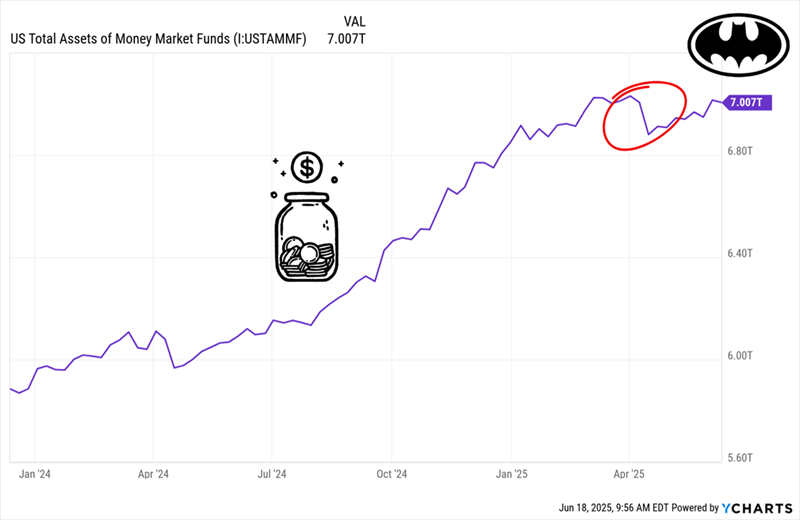Stocks—especially dividend stocks—have every reason to shoot higher from here. In fact, they have 7 trillion reasons.
That’s how much Americans have parked in money-market funds. But a chunk of that is about to shake loose. When it does, I see it piling into top dividend payers (and growers)—including the three we’ll discuss below.
Investors Wait for the Stock-Market “Bat Signal”
Before we get to that, the chart above is worth a look. Starting last summer, pre-election fears sent investors piling into money-market funds, pushing assets past $7 trillion.
Then something strange happened: They pulled cash out of these funds after the “Liberation Day” tariffs were announced.… Read more


Recent Comments